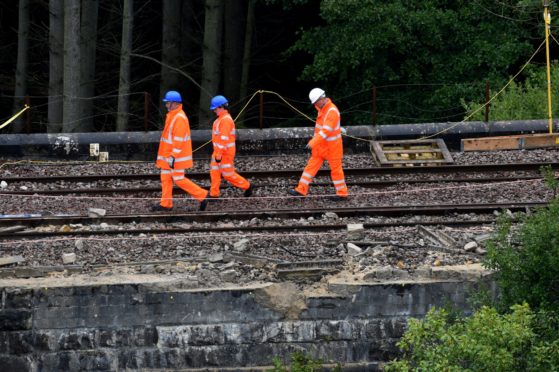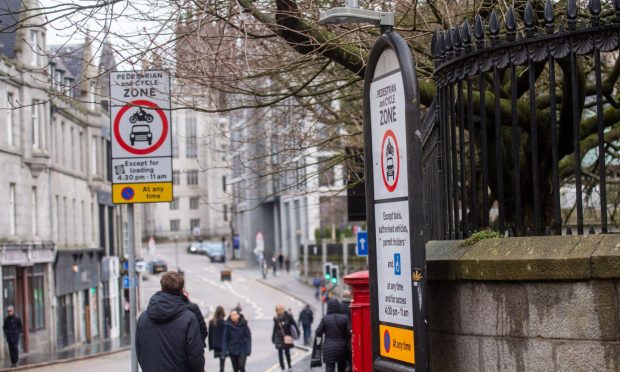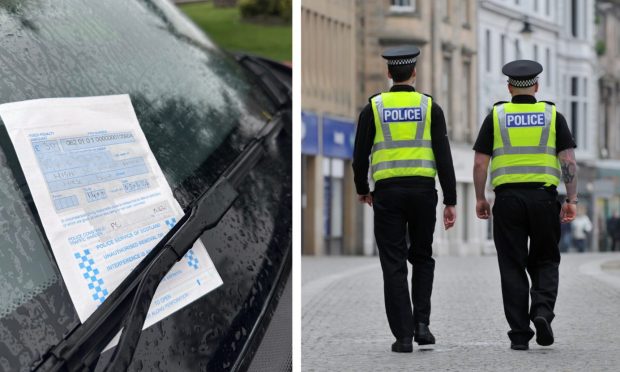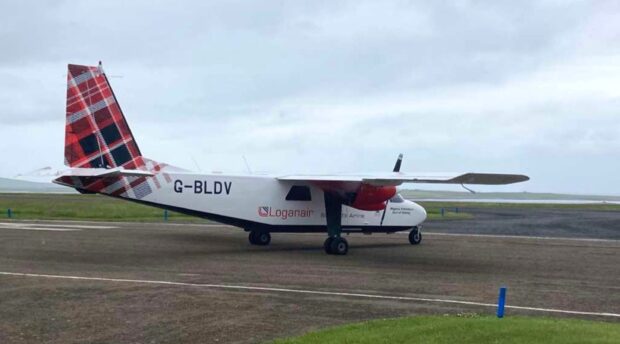The rail line that was the site of a train derailment that killed three people near Stonehaven will reopen next week.
The line between Aberdeen and Dundee has been shut since August 12, when the 6.38am ScotRail Aberdeen to Glasgow service struck a landslip.
As a result of the tragedy, driver Brett McCullough, conductor Donald Dinnie and passenger Christopher Stuchbury all died.
The incident caused extensive damage to the track, bridge, embankments and drainage systems at the crash site at Carmont, near Stonehaven.
Network Rail engineers have been working around the clock, initially supporting the accident investigation before beginning work in September to recover the derailed train carriages and repair and reopen the line.
The work has included:
- Building a new 900-metre road and temporary bridges over the surrounding farmland to bring specialist lifting equipment to the site.
- Constructing a 600-tonne crawler crane to carefully lift the derailed carriages from the railway.
- Replacing over 500 metres of damaged track, 70 metres of bridge parapets and relaying 400 metres of telecoms cables.
- Repairing and enhancing drainage systems and flood defences above and below the line.
- Rebuilding the railway embankment beneath the accident site.
Alex Hynes, managing director of Scotland’s Railway, said: “We continue to work closely with accident investigators as we seek to learn the lessons of this tragedy and make our railway as safe as possible for our people and our passengers.
“Our thoughts continue to be with the families and friends of Brett, Donald and Christopher and with the other passengers and colleagues who were affected by the accident.
“Our engineers have been working around-the-clock to repair and reopen the railway and we thank all our customers and lineside neighbours for the understanding they have shown during this difficult and distressing event.”
ScotRail has been operating a shuttle service between Aberdeen and Stonehaven and between Montrose and Edinburgh to keep customers in the north-east moving.
Replacement bus services have also been in place between Aberdeen and Edinburgh, linking into cross-border trains.
After the incident on August 12, Network Rail introduced a range of additional safety measures.
As an immediate precaution, hundreds of sites nationwide with higher-risk trackside slopes, similar to Stonehaven, were inspected.
These inspections were carried out by both in-house engineers and specialist contractors, supplemented by helicopter surveys.
Network Rail has also launched two taskforces, led by independent experts, as part of its long-term response to climate change and the challenge of maintaining its massive portfolio of earthworks (embankments and cuttings), many of which date from the Victorian era.
Dame Julia Slingo FRS, former chief scientist at the Met Office and a world-renowned expert in climatology, is leading a weather action taskforce with the objective of better equipping Network Rail to understand the risk of rainfall to its infrastructure, drawing on the latest scientific developments in monitoring, real-time observations and weather forecasting.
Lord Robert Mair is spearheading an earthworks management taskforce to see how Network Rail can improve the management of its earthworks portfolio, looking at past incidents, latest technologies and innovations and best practice from across the globe.
Network Rail already invests heavily in earthworks and drainage, and spending has increased significantly in recent years from £550m between 2009 and 2014 to a budget of £1.3bn for the period between 2019 and 2024.










